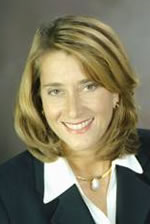|
In case you are a first-time reader, the format of our newsletter is from the audiobook, Lead From the Inside Out. Authentic Leadership is built from four stages: first you go inside to access the (Inner wisdom) of self or the organization, then that wisdom is brought to the outer world (Courage), given shape and form through Active Creation and the process taught to others by Paying It Forward.

 Learning from 25 top leaders Learning from 25 top leaders
In the new leadership book, Lasting Leadership: What you Can
Learn from the Top 25 Business People of Our Times, Mukul
Pandya and Robbie Shell have profiled 25 top leaders of our time.
Leaders were identified by a joint effort between the
Nightly Business Report (NBR), a daily television program
broadcasted in the U.S. by American Public Television and the
Public Broadcasting Service, and Knowledge @Wharton.
The leaders profiled in the book excelled in eight distinct
categories. Many of them had to do with creativity and conviction.
The conclusion is that great organizational leaders turn
uncertainty into inspiration and obstacles into opportunities
These top 25 leaders are as follows:
- Mary Kay Ash, founder of Mary Kay, Inc.
- Jeff Bezos, CEO of Amazon.com
- John Bogle, founder of The Vanguard Group
- Richard Branson, CEO of Virgin Group
- Warren Buffet, CEO of Berkshire hathaway
- James Burke, former CEO of Johnson & Johnson
- Michael Dell, CEO of Dell Inc.
- Peter Drucker, educator and author
- Bill Gates, chairman of Microsoft
- William George, former CEO of Medtronic
- Louis Gerstner, former CEO of IBM
- Alan Greenspan, chairman, U.S. Federal Reserve
- Andy Grove, chairman of Intel
- Lee Iacocca, former CEO of Chrysler
- Steve Jobs, CEO of Apple Computers
- Herb Kelleher, chairman of Southwest Airlines
- Peter Lynch, former manager of Fidelity’s Magellan Fund
- Charles Schwab, founder of The Charles Schwab Group
- Frederick Smith, CEO of Federal Express
- George Soros, founder and chairman of The Open Society Institute
- Ted Turner, founder of CNN
- Sam Walton, founder of Wal-Mart
- Jack Welch, former CEO of General Electric
- Oprah Winfrey, chairman of the Harpo group of companies
- Muhammad Yunus, founder of the Grameen Bank
They excelled in the following eight leading capacities:
-
Identifying and catering to underserved markets.
-
Using price to build competitive advantage.
-
Enhancing organizational brand.
-
Revealing the full truth.
-
Building a strong corporate culture.
-
Managing risk.
-
Seeing the invisible—especially winning trends—ahead
of rivals.
-
Learning fast.

 Turning dysfunctional teams Turning dysfunctional teams
 into courageous collaborators into courageous collaborators
Believing in one’s self, taking the first step, throwing
caution to the wind—these clichés all require
accessing courage, the necessary step to bringing any idea to
fruition. That said, courage alone certainly does not ensure
success. Courage must be accompanied by a strong framework of
practical elements working together to ensure success.
In the Five Dysfunctions of Team, author Patrick Lencioni
presents a compelling leadership fable that explores the role of
teams in providing the support structure that can turn courage, or
intent, into positive results—or, conversely, take the best
of intentions and still yield failure.
Lencioni identifies the dysfunctions: absence of trust, fear of
conflict, lack of commitment, avoidance of accountability, and
inattention to results. Presented in a story format, each is shown
as building on the other—and the definitions of each are not
immediately apparent.
Absence of Trust: In this context, trust is the
“confidence among team members that their peers’
intentions are good.” This requires team members to allow
themselves to be vulnerable, to be fully comfortable with one
another, to provide an environment where sharing ideas comes
naturally. The author provides examples and suggestions for
building the requisite trust.
Fear of Conflict: Conflict is required for change to occur
(and provides much more interesting meetings!). Here Lencioni
points out that while productive conflict should be a goal of any
team, the higher one goes in an organization, the more people spend
time and energy avoiding conflict. “Teams that engage in
productive conflict know that the purpose is to produce the
best possible solution in the shortest amount of time,”
Lencioni writes.
Lack of Commitment: Buy-in or support of the project
is necessary even when consensus is not possible. Successful teams
can achieve alignment and unity even when success isn’t
guaranteed—and without it, success is not possible.
Avoidance of Accountability: It is human instinct to
defend and deflect. In a team environment, no one wants to single
out someone else on behavior that may hurt the
team—especially since the person called out is likely to
become defensive to create a cycle of blame. In a healthy team,
peer pressure is fostered in a productive way so that everyone
feels a sense of ownership, and the stronger fear is that of
letting down the other team members.
Inattention to Results: Focus gets diverted, Lencioni
says. While results are desired, team members lose sight of their
individual contributions required to reach those results—and
are unwilling to sacrifice to see them through. This is especially
a problem if there is status associated with membership in the team
or if an individual perceives his or her own career advancement as
tied to team membership. To prevent this, only that which supports
the collective results should be rewarded—collectively.
Results must be measurable, and rewarded when fully realized;
objectives must stay in view; and individual goals must not come
into play.
It takes courage to convince others of shared intentions, encourage
constructive conflict, build consistent project support, foster
ownership, and maintain unrelenting focus on objectives! When true
collaboration is achieved, the end results will support the initial
goals and enthusiasm.
One of the reasons people stop learning is that they become less
and less willing to risk failure.
—John W. Gardner

 When leadership relies on a role, When leadership relies on a role,
 not a person not a person
An interesting perspective on building team is from research
conducted in a Shock Trauma Unit. Katherine Klein, Jonathan
 Ziegert, Andrew Knight, and Yan Xiao spent 10 months studying
six-person teams in the Shock Trauma Center in Baltimore, MD. What
they discovered was a very different paradigm than conventional
team building. Their team structure had to ensure seamless
effective teamwork with some people who had never worked together
before, with team members that changed every hour, constantly
shifting leadership and the possibility that any mistake by even
one person could have disastrous or even fatal consequences. Ziegert, Andrew Knight, and Yan Xiao spent 10 months studying
six-person teams in the Shock Trauma Center in Baltimore, MD. What
they discovered was a very different paradigm than conventional
team building. Their team structure had to ensure seamless
effective teamwork with some people who had never worked together
before, with team members that changed every hour, constantly
shifting leadership and the possibility that any mistake by even
one person could have disastrous or even fatal consequences.
What set this team structure apart was that leadership did not rely
on a person, but on a role. Because the team composition shifted
from day to day, week to week, and month to month, the lifetime of
a team could be stable for 15-60 minutes—unheard of in most
corporate settings.
The trauma unit leadership resided in a hierarchy of three
positions: the top-ranked position, held by the “attending
surgeon,” followed by the second-ranked “fellow”
position, followed by the third-ranked “admitting
resident.”
Trust is enabled by clearly identified roles aligned with
consistent responsibilities. With shared accountability and so much
at stake, the flow of the team is critical. Because each can assume
the other has specific talents, and each can clearly identify the
level of training and expertise of the others, they are able to
rely on one another and appropriately delegate or step in to assist
as needed. The clarity of roles helps to take the personalities of
the team members out of the mix in critical situations.

 Collaboration with teams builds success Collaboration with teams builds success
In teams, wisdom can also be gained from peers, when synergies are
created and contributions are sought from each member.
 An excellent book on managing and working with a team is The
Team Handbook by Peter Scholtes, Brian Joiner, and Barbara
Streibel. The book calls itself “a companion in your efforts
to lead change and better serve customers” and presents
groundbreaking work integrating teamwork and quality initiatives.
It’s a reference that can be used at any stage of team
development, applicable whether the team is assembled for the
management of a project, brought together as part of a corporate
structure overall, or is a nonprofit. An excellent book on managing and working with a team is The
Team Handbook by Peter Scholtes, Brian Joiner, and Barbara
Streibel. The book calls itself “a companion in your efforts
to lead change and better serve customers” and presents
groundbreaking work integrating teamwork and quality initiatives.
It’s a reference that can be used at any stage of team
development, applicable whether the team is assembled for the
management of a project, brought together as part of a corporate
structure overall, or is a nonprofit.
From defining teams and addressing the necessity for change, the
workbook directs its readers by providing specific tools and
exercises to improve skills designed to improve quality,
proactively manage conflict, and create actionable plans. When
relationships are honed toward a common goal, success is within
reach.

 How we can help you How we can help you
Common Boundaries Consulting & Communications
Promoting powerfully authentic leadership for the organization
and for the individual.
We support active planning to attain individual and organizational
goals. Our programs can support either with a curriculum that
includes:
- Team-learning
- Leadership Skills I and II
- Consultative Skills I and II
- Team Learning and Conflict Management
- Cultural Change and Cultural Transformation
- Individual and Group Management Coaching
- Women’s Leadership Skills: Gender-specific Leadership Issues
- Personality Assessments: Myers-Briggs, Kiersey Temperament model, SDI, and others
- Outdoor Motivation/Education Coaching
- Image Studies, Individual and Group Coaching (Long and Short-term coaching available)
To find out more about our consulting and programs, please see our
Web site www.commonboundaries.com, or
contact us at 954-385-8434.


For details see www.commonboundaries.com
April
Greensboro, NC
May
Fort Lauderdale, FL
How to Build Team: 5 Dysfunctions of Team
Fort Lauderdale, FL
Build Relationship Intelligence
Fort Lauderdale, FL
Effective Communication
June
Fort Lauderdale, FL
Building Relationship Awareness and Conflict Management
August
Fort Lauderdale, FL
Effective Communication
October
Fort Lauderdale, FL
Authentic Leadership Intensive


Only those who constantly re-tool themselves stand a chance of
staying employed in the years ahead.
—Tom Peters
Authentic sustainable change cannot be generated by working with
the surface layers of behavior and experiences. We must learn to
reach below the obvious issues to the internal patterns upon which
the outer structures are built. When you access this foundation,
you can make a real difference [in your life.]
—From Re-Tooling on the Run
Stuart Heller & David Sheppard Surrenda
Books to read:
- Five Dysfunctions of Team
- The Team Handbook
- Re-tooling on the Run
- Crucial Confrontations
|


 During a recent trip to Colorado to enjoy the cold and snow, I came
across an interesting article from the Wharton Leadership School.
It talked about a new direction for Leadership Training and
Development—tapping into creativity rather than relying
mostly on rational and objective thought.
During a recent trip to Colorado to enjoy the cold and snow, I came
across an interesting article from the Wharton Leadership School.
It talked about a new direction for Leadership Training and
Development—tapping into creativity rather than relying
mostly on rational and objective thought.
 If you have not yet reflected on what possibilities you created
from unfortunate events that occurred last year, I encourage you to
do so. Then, looking forward to next year, consider what you would
like to create.
If you have not yet reflected on what possibilities you created
from unfortunate events that occurred last year, I encourage you to
do so. Then, looking forward to next year, consider what you would
like to create.
 Ziegert, Andrew Knight, and Yan Xiao spent 10 months studying
six-person teams in the Shock Trauma Center in Baltimore, MD. What
they discovered was a very different paradigm than conventional
team building. Their team structure had to ensure seamless
effective teamwork with some people who had never worked together
before, with team members that changed every hour, constantly
shifting leadership and the possibility that any mistake by even
one person could have disastrous or even fatal consequences.
Ziegert, Andrew Knight, and Yan Xiao spent 10 months studying
six-person teams in the Shock Trauma Center in Baltimore, MD. What
they discovered was a very different paradigm than conventional
team building. Their team structure had to ensure seamless
effective teamwork with some people who had never worked together
before, with team members that changed every hour, constantly
shifting leadership and the possibility that any mistake by even
one person could have disastrous or even fatal consequences.
 An excellent book on managing and working with a team is The
Team Handbook by Peter Scholtes, Brian Joiner, and Barbara
Streibel. The book calls itself “a companion in your efforts
to lead change and better serve customers” and presents
groundbreaking work integrating teamwork and quality initiatives.
It’s a reference that can be used at any stage of team
development, applicable whether the team is assembled for the
management of a project, brought together as part of a corporate
structure overall, or is a nonprofit.
An excellent book on managing and working with a team is The
Team Handbook by Peter Scholtes, Brian Joiner, and Barbara
Streibel. The book calls itself “a companion in your efforts
to lead change and better serve customers” and presents
groundbreaking work integrating teamwork and quality initiatives.
It’s a reference that can be used at any stage of team
development, applicable whether the team is assembled for the
management of a project, brought together as part of a corporate
structure overall, or is a nonprofit.
